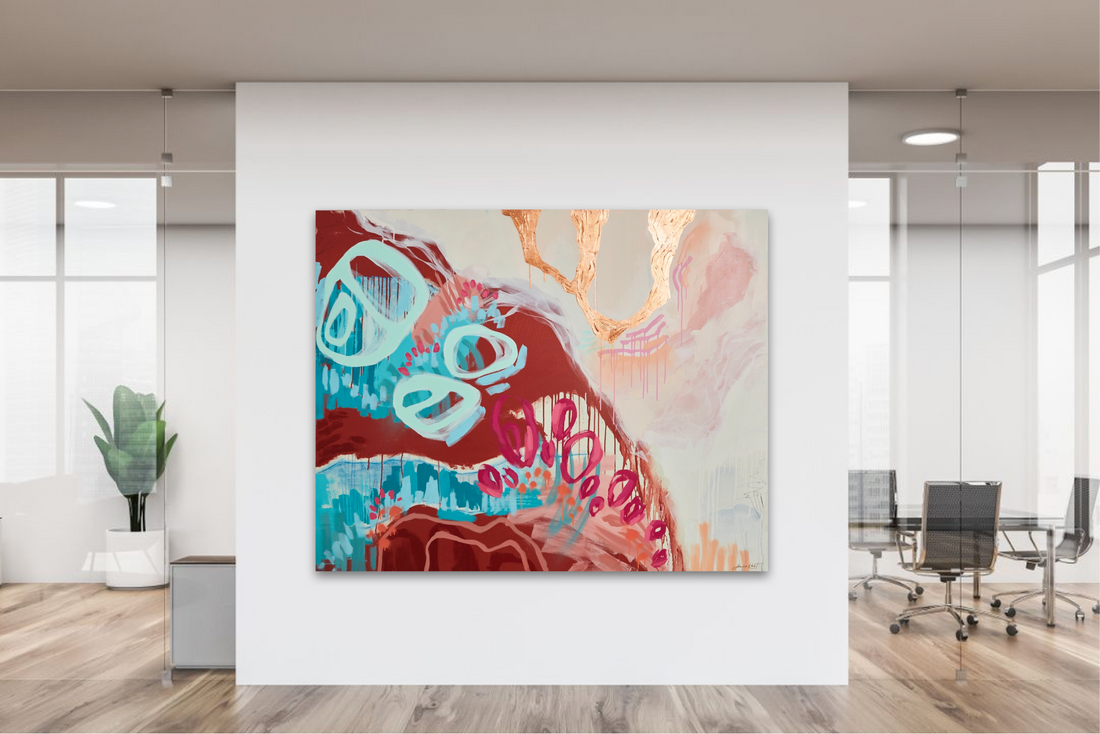
Have you ever entered a corporate building and immediately noticed stunning artwork? Ok maybe that's just me, but even if you're not the type of person to notice it directly, I bet you feel it subconsciously. Even airports, typically places of stress and drudgery, display extensive artwork - sometimes including galleries of art, or giant art installations. And it makes sense; a home without art is lifeless and dull. Why would a workplace or public space without art be any different?
I would go so far as to say that art isn't just a nice addition to a work environment or corporate space; its a necessity. Several studies have been done showing massive benefits, both for employees and the company as a whole. A study conducted by Exeter University found that employees who were able to engage with art in the workplace reported higher levels of well-being, creativity, and productivity (Hesketh and Cooper, 2011).

Here are just some of the benefits of incorporating fine art into corporate environments:
-
Improved workplace atmosphere: Fine art can help to create a more welcoming and inspiring environment, which can lead to increased job satisfaction and motivation among employees. Research has shown that a pleasant workplace environment can have a positive impact on employee well-being, and can also help to reduce stress and absenteeism (Peters et al., 2014).
-
Increased employee engagement: Art can help to create a sense of connection and pride among employees, by promoting a shared identity and values within the workplace. This can lead to increased engagement and commitment among employees, and can also help to attract and retain top talent (Hesketh and Cooper, 2011).
-
Improved company image: Incorporating fine art into the workplace can help to enhance a company's reputation as a socially responsible and culturally aware organization. This can help to build trust and loyalty among customers, investors, and other stakeholders, and can also improve the company's ability to attract new clients and partners (Battistoni, 2019).
-
Increased creativity and innovation: Exposure to art can help to stimulate creativity and innovative thinking among employees, by exposing them to new ideas, perspectives, and forms of expression. This can help to foster a more innovative and competitive corporate culture, which can lead to new product and service offerings, as well as improved business processes and strategies (Kaufman and Sternberg, 2010).
-
Positive impact on mental health: Art has been shown to have a positive impact on mental health, by promoting relaxation, reducing stress, and improving mood. This can lead to a more positive and productive work environment, by helping to reduce absenteeism and turnover rates, as well as improving overall employee well-being (Battistoni, 2019).

Overall, incorporating fine art into corporate environments is undeniably beneficial for both employees and the company as a whole. By contributing to a more welcoming, creative, impressive, healthy and inspiring workplace, fine art can help to create a more positive and productive work environment and foster improved company image.

References:
Battistoni, E. (2019). The Benefits of Incorporating Fine Art into Your Workplace. Retrieved from https://www.christies.com/features/The-benefits-of-incorporating-fine-art-into-your-workplace-9819-1.aspx
Hesketh, I., & Cooper, C. (2011). Employee well-being in the contemporary workplace. In Employee Well-being Support: A Workplace Resource (pp. 11-26). Wiley-Blackwell.
Kaufman, J. C., & Sternberg, R. J. (2010). The Cambridge Handbook of Creativity. Cambridge University Press.
Peters, D., Calvo, R. A., Ryan, R. M., & Ryan, C. (2014). Designing for motivation, engagement and wellbeing in digital experience. Frontiers in Psychology, 5, 1-13.

